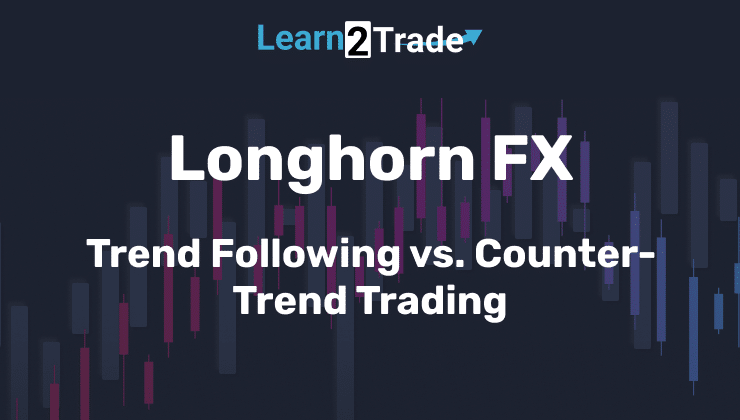In the world of Forex trading, two of the most popular strategies are trend following and counter-trend trading. Both strategies have their merits and can lead to profitability, but they suit different types of traders and market conditions. Understanding how these strategies work, their advantages and risks, can help you decide which approach aligns best with your trading style.
What is Trend Following?
Trend following is a strategy that involves trading in the direction of the market’s current trend. Traders using this approach believe that price movements tend to continue in the same direction once a trend has been established. The idea is to “ride the wave” of a strong trend for as long as possible, aiming to capture substantial price movements over time.
This strategy works particularly well in markets where trends are strong and consistent. To identify trends, traders often rely on technical indicators such as moving averages, trend lines, and the Average Directional Index (ADX). When these tools confirm the presence of a trend, a trend follower will enter the trade and stay in it until the trend shows signs of reversing.
Advantages of Trend Following:
- Higher Profit Potential: When done correctly, trend following can lead to significant gains as traders ride large price movements.
- Simplicity: The strategy is straightforward and often easier to follow compared to more complex strategies that require constant market monitoring.
- Less Stress: Trend followers tend to hold positions for longer periods, reducing the need for frequent trades and allowing them to avoid the stress of intraday volatility.

- Trend Reversals: A sudden reversal can result in losses, especially if a trader doesn’t exit the trade quickly.
- False Signals: At times, trends may appear, but fail to hold, leading to losses for traders who enter too early or late.
What is Counter-Trend Trading?
Counter-trend trading, on the other hand, involves going against the current market trend. The idea is to profit from price corrections or reversals by identifying when a trend has become overextended and is likely to reverse. This strategy requires a keen eye for spotting overbought or oversold conditions, typically using tools like the Relative Strength Index (RSI), Stochastic Oscillator, or Bollinger Bands.
Counter-trend traders aim to capitalize on smaller price movements, often focusing on short-term opportunities. Instead of waiting for long trends to develop, they enter and exit trades quickly, making this strategy more suited for active traders.
Advantages of Counter-Trend Trading:
- More Frequent Trading Opportunities: Since the market frequently experiences small pullbacks, counter-trend traders may find more opportunities to trade.
- Smaller, Quicker Profits: Counter-trend trading allows for consistent smaller profits, as traders take advantage of quick market corrections.
Risks of Counter-Trend Trading:
- High Risk of Losses: Going against the trend can be risky, especially if the trend continues strongly, wiping out any potential gains from the reversal.
- Requires Precision: Counter-trend traders need excellent timing to enter and exit trades. Getting it wrong can lead to significant losses.
Which Strategy is Right for You?
Choosing between trend following and counter-trend trading depends largely on your personality, risk tolerance, and trading goals. If you prefer a more relaxed, hands-off approach and have the patience to wait for significant price moves, trend following might be for you. It’s ideal for traders who don’t want to be glued to their screens all day and can handle potential drawdowns in pursuit of larger gains.
On the other hand, if you thrive in fast-paced environments, enjoy active trading, and have a higher risk tolerance, counter-trend trading may be a better fit. This strategy is more suited for traders who can react quickly to market changes and don’t mind taking smaller, more frequent profits.
Maximizing Your Strategy with LonghornFX
Regardless of which strategy you choose, having the right broker is essential to your success. LonghornFX offers leverage of up to 1:500, allowing you to control larger positions whether you’re following trends or counter-trend trading. In addition, LonghornFX’s tight spreads ensure that you can enter and exit trades with minimal transaction costs, maximizing your profits.
Both trend following and counter-trend trading are viable strategies in Forex, but they cater to different types of traders. Trend followers look to capture large price movements over time, while counter-trend traders aim to profit from short-term reversals. By understanding your trading style and choosing the right broker, you can effectively implement either strategy and work toward consistent success in the Forex market.